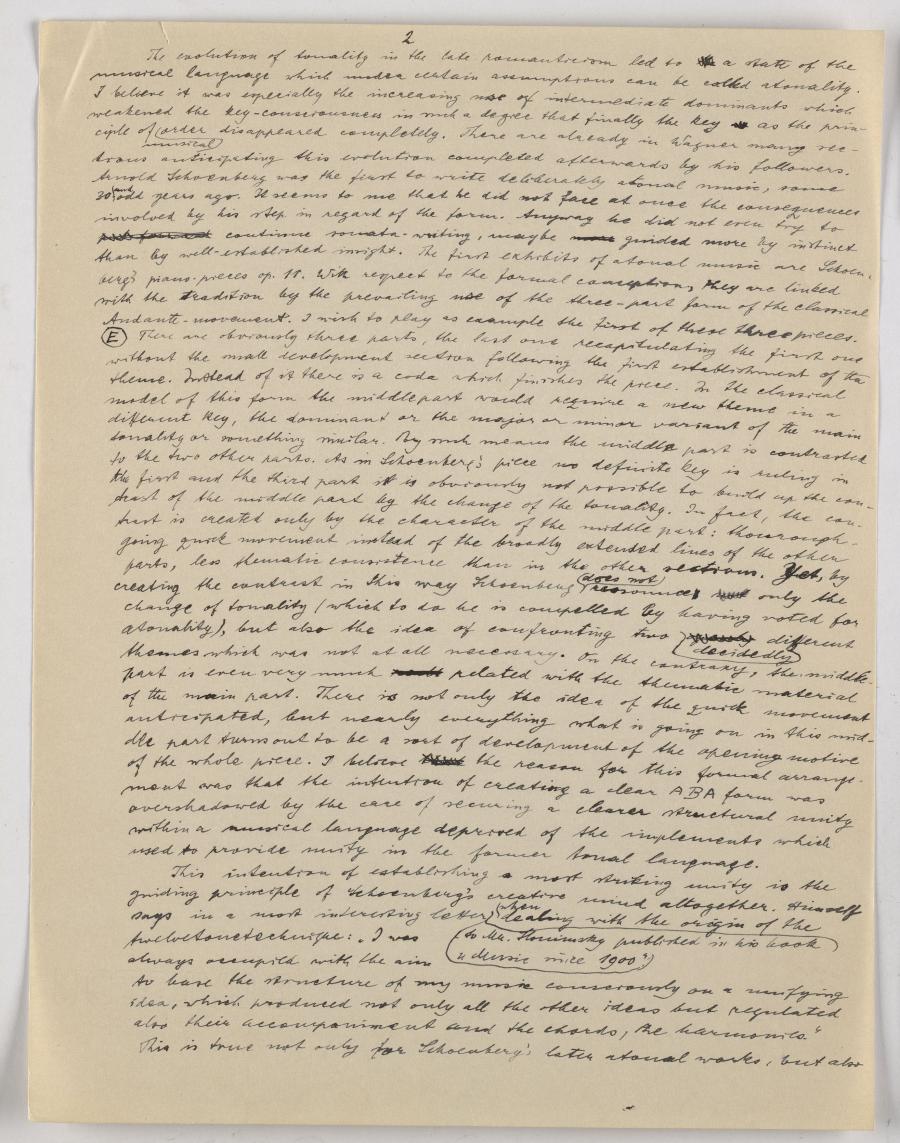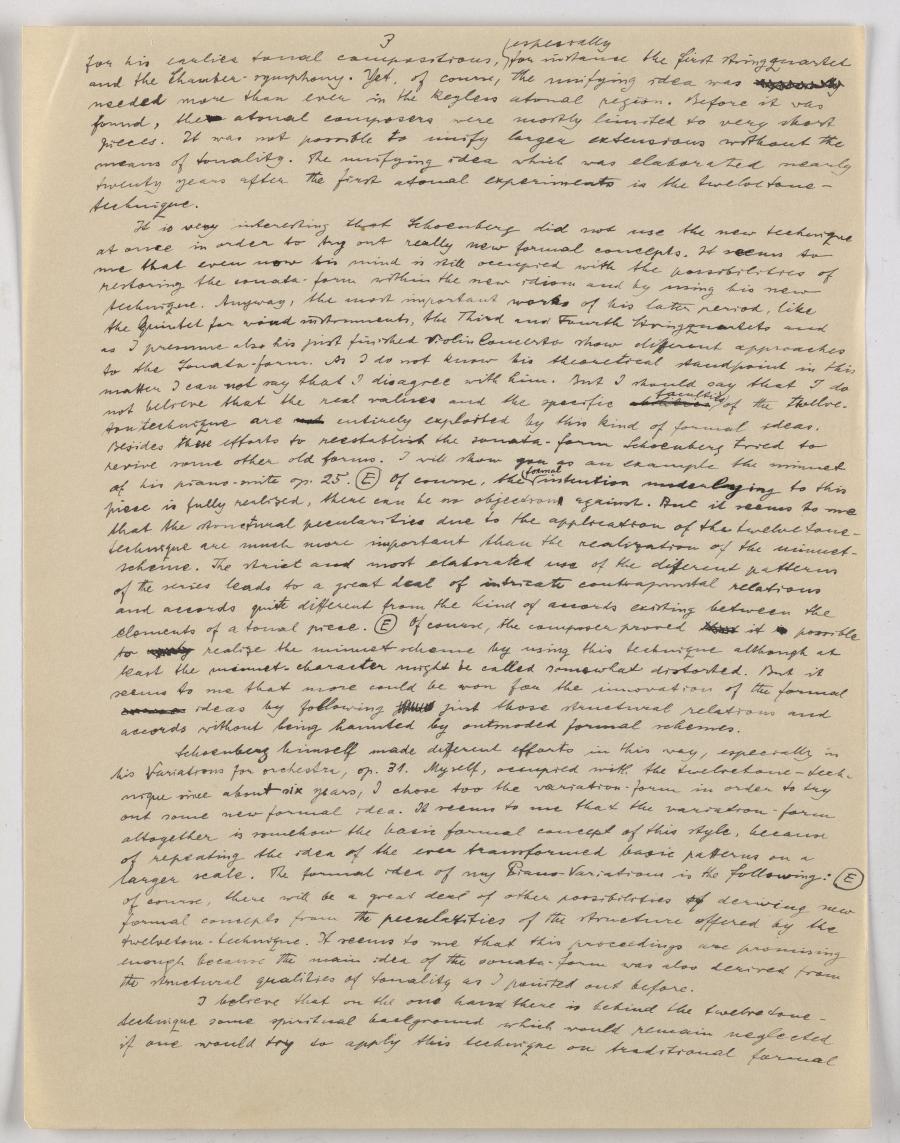Wesleyan University Middletown, Conn. Fall 1938
Abstract
In diesem Vortrag – gehalten im Herbst 1938 an der Wesleyan University – erläutert Krenek die Beziehung zwischen Tonalität und den alten musikalischen Formen, insbesondere der Sonaten-Form, deren innere Struktur von Funktionsharmonik und Tonarten-Beziehungen durchdrungen ist. Frühe Atonalität hatte auch eine Auflösung der herkömmlichen Formen zur Folge, und erst in Schönbergs Zwölftontechnik wird wieder eine musikalische Sprache möglich, die eine innere formale Einheit aufweist.
Wesleyan ULecture: Wesleyan U.
There are especially three statements, which I wish to make the main issues of the present discussion.
The first would be that the Sonata-form is the standard form of tonality
and as such bound to the conditions of tonality. As tonality or tonal music
I am comprehending the music inaugurated in Their
By the second thesis I wish to point out that the efforts of resolveing
the problem of the form by in the realm of atonality by reestablishing
the Sonata-form or other traditional forms
Thirdly, I will try to demonstrate that only the twelve-tone-technique
was able to
In referring to number one, I think I can be very brief. History proves
that the Sonata-form is connected with tonality in the above mentioned
sense, as the Sonata-form did not develop before the 18th century, 100
years after the establishment of tonality. The same is proved by the ana-
lysis of the formal idea of the It
It is true that the appearance of the post-classical sonatas, for instance
the symphonies of of
The evolution of tonality in the late romantricism led to E There are obviously three parts, the last one recapitulating the first one
without the small development section following the first establishment of the
theme. Instead of it there is a coda which finishes the piece. In the classical
model of this form the middle part would require a new theme in a
different key, the dominant or the major or minor variant of the main
tonality or something similar. By such means the middle part is contrasted
to the two other parts. As in not only theopenly different
This intention of establishing a most striking unity is the
guiding principle of
for his earlier tonal compositions,
It is very interesting that abilities E Of course, E Of cause, the composer proved that it is
E
of course, there will be a great deal of other possibities of deriving new
formal concepts from the pecularities of the structure offered by the
twelvetone -technique. It seems to me that this proceedings are promising
enough because the main idea of the sonata-form was also derived from
the structural qualities of tonality as I pointed out before.
I believe that on the one hand there is behind the twelvetone- technique some spiritual background which would remain neglected if one would try to apply this technique on traditional formal
4
schemes by using it as a so-to-speak ready-made device. Just when
way



